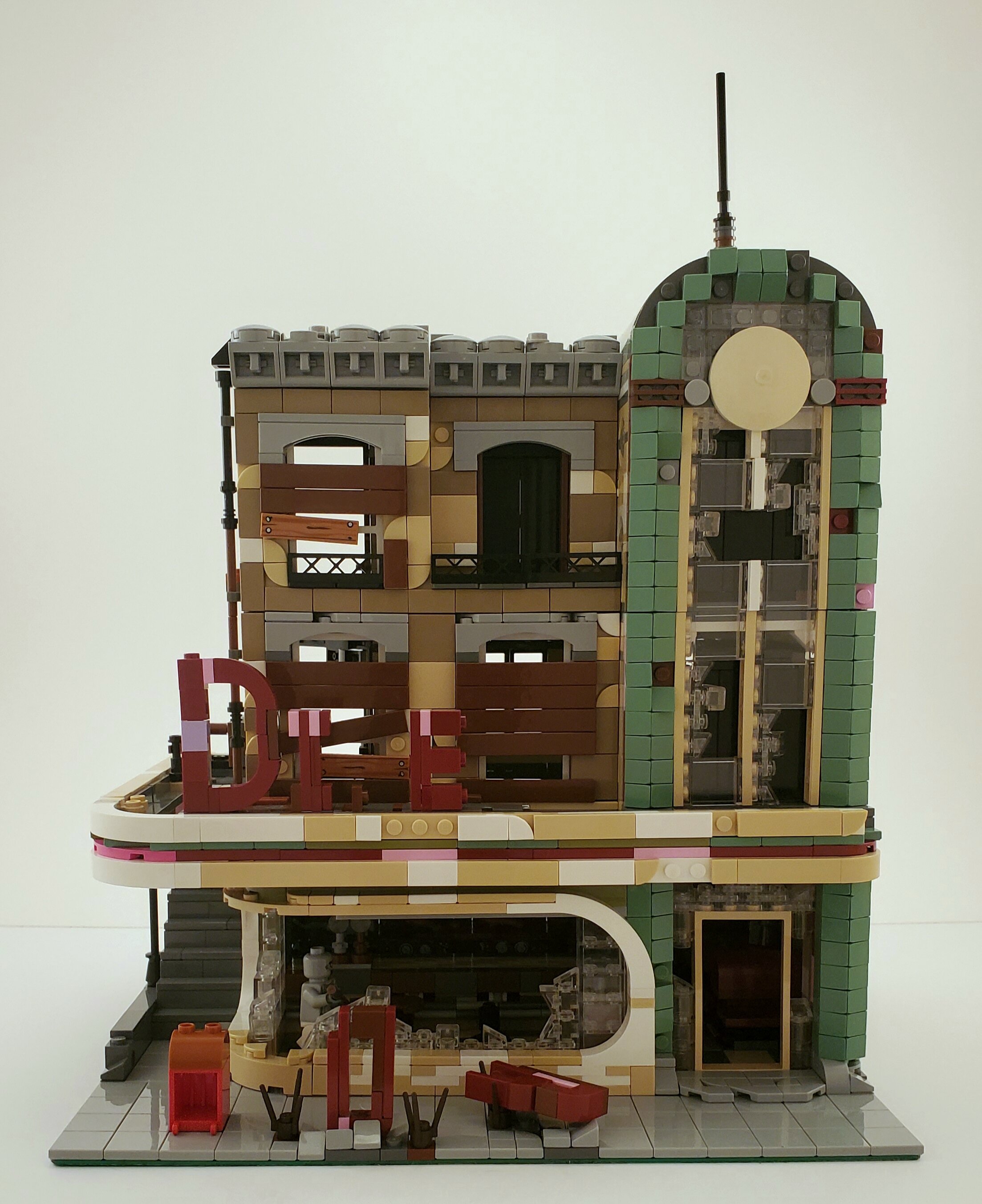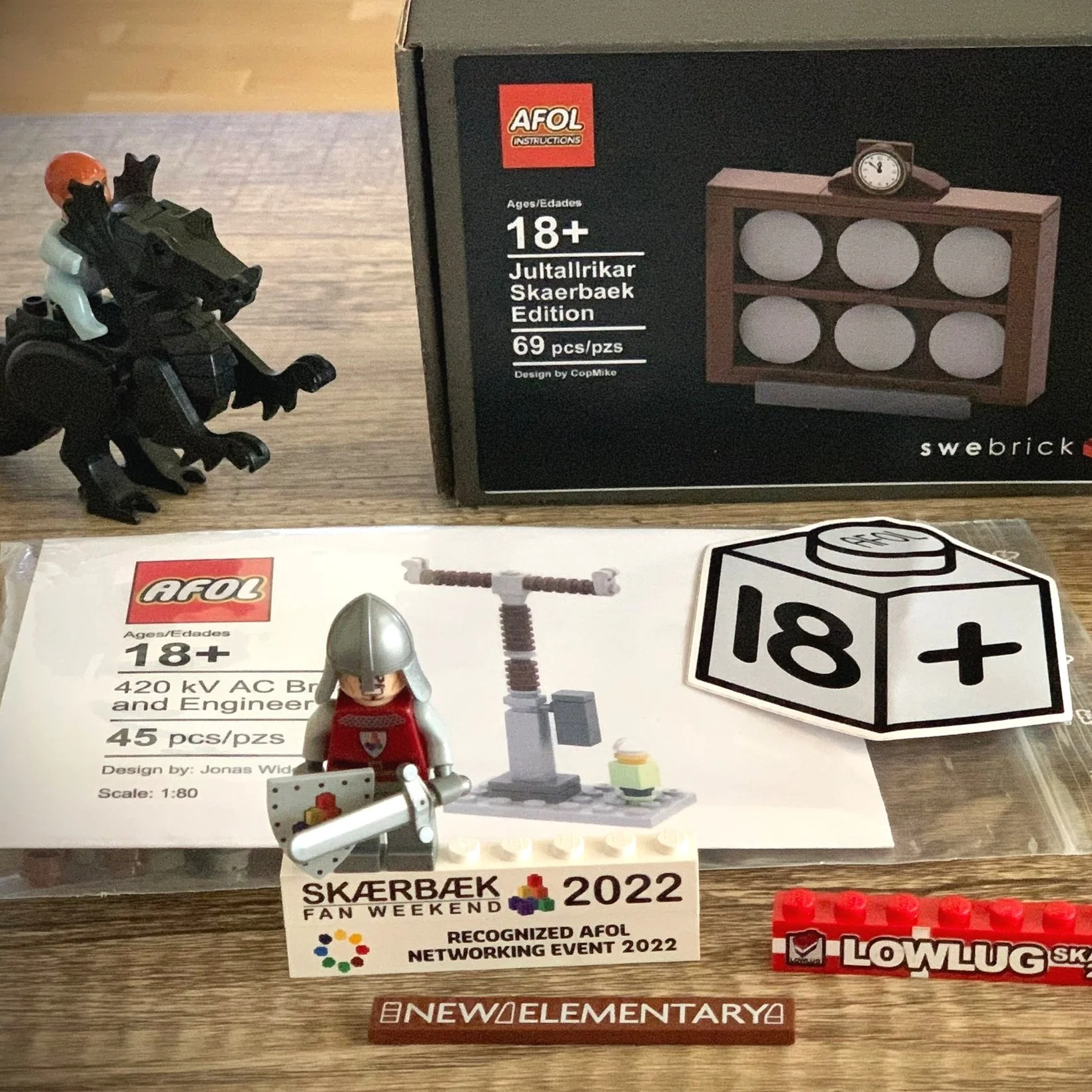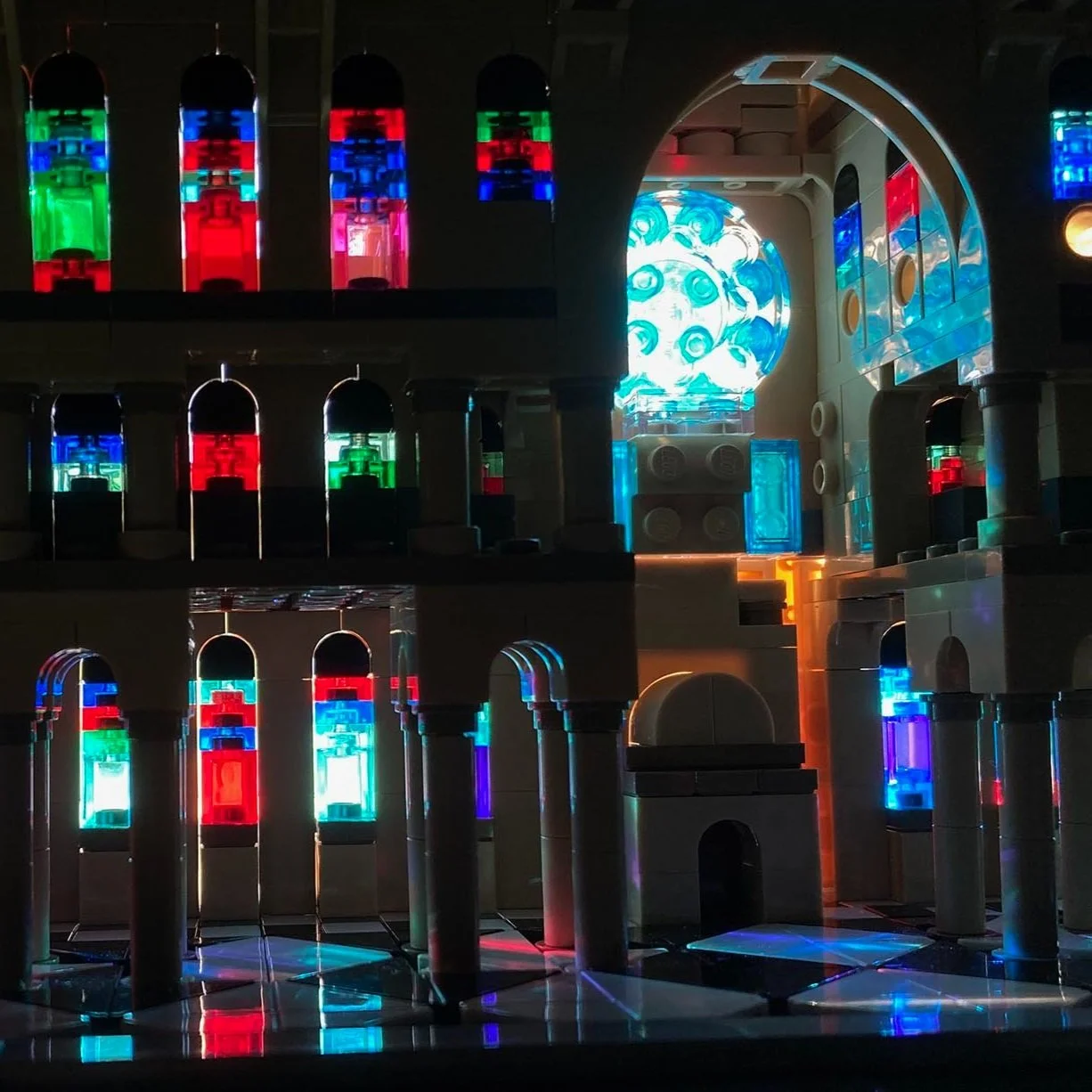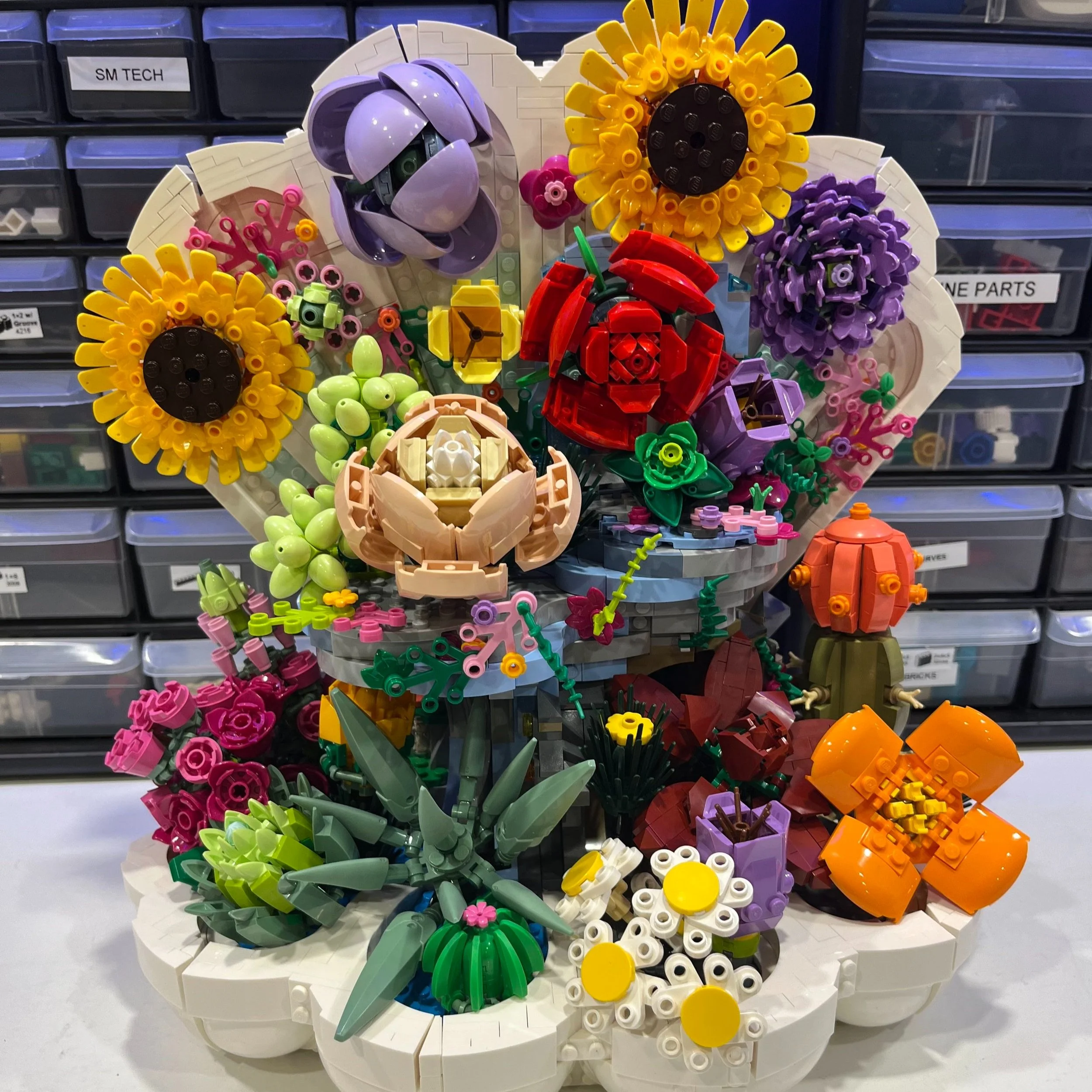Deliberate Destruction: Storytelling Amid a LEGO Apocalypse
/I love stories in MOCs—simple stories, complex stories, it doesn’t matter. To me, a LEGO model should tell a story without explanation, and perhaps get even deeper meaning the more you look at it. I took this approach with one of my last MOCs, “We’ll Be Safe in Here,” trying to add a story that would convey an emotion.
For some time now, I have also been working on my Apocalypse Series. I’ve been working my way through LEGO’s modular series and reenvisioning them in a post-apocalyptic world. I have completed four models and am sharing the fifth today, along with some of the things I’ve learned about building destruction and storytelling.
For all of the buildings in my series, I never start with the finished set—I always start from scratch and only use the set as a rough framework. I evaluate the original set and pick some key features that will stay and what will be destroyed. Sometimes, choosing a single wall or corner to knock down is a good starting point. From there, you start to “age” the building in your mind, trying to imagine where the destruction goes from there. What signs would decay, where would vegetation grow, and how would the building stand up to the elements?
One of my go-to techniques to show age is to distress the windows. Windows are always a great place to show dilapidation. You can either leave the frame but remove the windowpane, make your own rotting frame at interesting angles, or use transparent clear plates and cheese wedges for a “shattered glass” effect. Beyond that, I keep three tips in mind for destruction:
1. Use a muted color palette with sand variants—no one is painting these buildings in the Apocalypse.
2. Cheese wedges and 1x1 quarter round tiles are your friends—breaking the facade into smaller pieces shows age and decay.
3. Follow the crack—if a glass window shattered or a particular wall collapsed, where would the cracks go from there and what would the elements do to the building as a consequence?
Then, I think of the story. Who would inhabit these buildings after they have decayed so much? What cues from the original sets can I enhance and extrapolate the future in an apocalyptic world? I find that when you start imagining these things, the model starts to speak to you and guide you in the ways of destruction. That’s where I found myself when I approached my next decayed modular, the Corner Garage!
I choose the garage as my next building in the series because of its unique coloring and features. It stands out somewhat from the rest of the modulars due to its more modern architectural feel. Honestly, I had originally planned to make the gas station portion of the model into a “Red Rocket” gas station from Fallout, but I thought it might be better to keep the world open to interpretation rather than locking it to a specific game or intellectual property (even though this whole series started back in 2016 as part of a Fallout collab). So I stuck with the feeling of the LEGO Octan brand.
The dented post was achieved by cutting several small flex tube pieces to use between the technic axle connectors.
I started by framing out the building’s ground floor, leaving the gas pump and pavement work until I had some sort of idea of WHY the awning would be collapsed. Here is where storytelling took over.
I realized that the garage would be the first modular to really feature vehicles. I knew I wanted to utilize the tow truck in some fashion, maybe decaying inside or towing some poor soul’s last car. Maybe I could even convert it one some sort of Mad Max mobile. But I wanted a story that would be more simple and easier to convey. Often the simplest idea is the best.
I decided that someone crashed into the post, perhaps in a vain attempt to flee the city during the early days of the Apocalypse—or maybe even after a joy ride gone wrong when there was nothing else to do during the end of the world.
From there my imagination sparked. I had made an Apocalypse Downtown Diner but had not included a version of the pink Cadillac! That was the answer, tying in the story from one modular to the next. Now all I had to do was to build a decaying Caddy with a sizable dent in the front where it would have hit the post. The run-down tow truck came soon after. The garage portion and exterior was complete. Now I needed to address the building’s interior.
In terms of storytelling, I always try to start these modulars with a narrative in mind, though I was a little stumped with this one. But last year during a Q&A at BrickCon about my models, I was asked why there were no animals in my Apocalypse series. The easy answer was because these were originally built for the Fallout collab I mentioned and the game doesn’t include many animals. To be honest, I don’t add many minifigs either to better reflect a lonely forgotten world. But here is where the set spoke to me—the original garage included a veterinarian clinic, so what better time to include animals in the LEGO Apocalypse?
Looking at the original set, I noticed the vet was represented by an older minifig at the clinic with another younger minifig living upstairs in a studio loft. The story wheels started to churn. What if this younger fellow was a friend of the vet who hadn’t survived? Maybe he was an apprentice in training and felt obligated to continue the vet’s work into the Apocalypse after his mentor’s demise? With that story in mind, I started completing the interiors of the building filling them with the animal survivors—the larger ones on the ground floor and the smaller ones higher up. (Sadly, no goats survived!)
The Apocalypse Corner Garage was now complete with two clear storylines conveyed among the devastation. I wonder where the build would have gone if I took it more of a Mad Max direction, but I am content with the more subdued, personal feel the garage ended up with. I am also happy the model led me in the ways it would decay over time, assisted by a car crash and an animal hospital. All you have to do is follow the cracks and let your imagination run wild. Happy building, lone wanders.
For more photos of my Apocalypse series, please visit my Flickr or Instagram accounts.
Have you ever built something that looked like it was purposefully destroyed? What are some tricks you use to convey a story in a MOC? Leave your thoughts in the comments below.




























